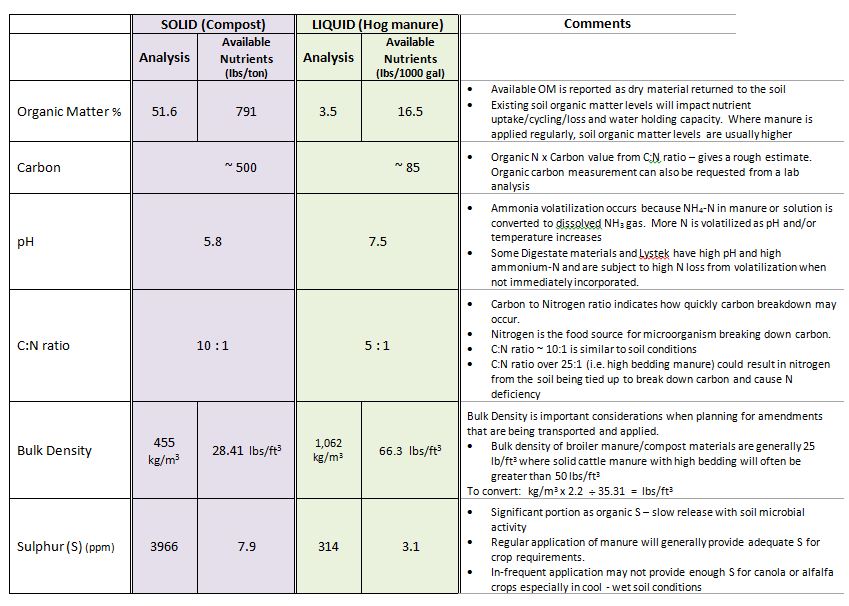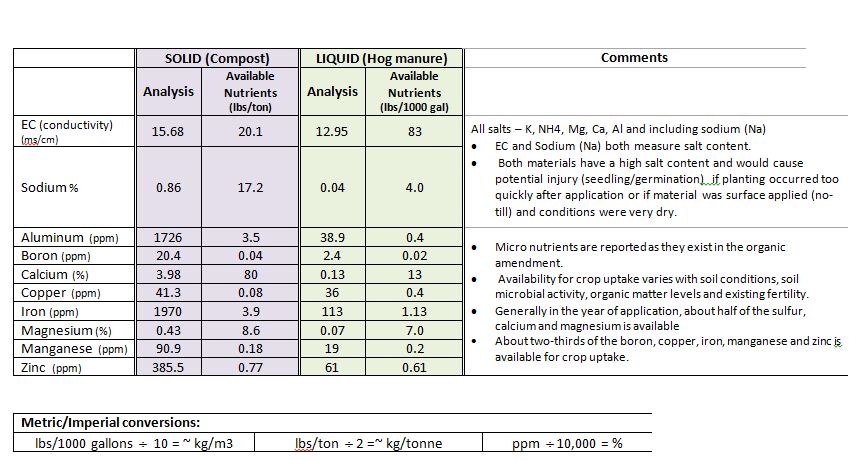Analyzing organic amendments, such as manure, compost, digestate and biosolids, has always been recommended for macro-nutrients, but there is more to manure than just N-P-K. Significant micro-nutrients, organic matter and other elements are also present, and can reveal additional cost savings or management precautions.
An analysis does not give a lot of detail about the effect or the impact of the organic amendment on soil microbial activity. Soil microbial activity is important for its role in decomposition of crop residue and mineralization of nutrients. The larger and more diverse the microbial community, the greater the potential for soil microbial activity and enzyme process in increasing nutrient mineralization and nutrient cycling.
Table 1 provides an example of a solid analysis (compost material) and a liquid manure analysis (hog manure). The analysis report generally comes back percentages and parts per million (ppm). What do these numbers mean, and how can that information be used to enhance the value of the organic amendment? The “Available Nutrients” columns reveals the nutrients contained in the material based on Ontario guidelines. The comments column gives additional detail.



Comments are closed.